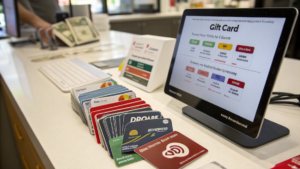What is a Power Bank Charger, and How Does It Work?
Are you tired of your phone dying when you are out and about? We all know that feeling of panic when the battery icon turns red, cutting us off from our digital world.
A power bank charger is a portable battery that stores electrical energy and releases it to charge your devices on the go, providing freedom from wall sockets and ensuring you stay connected.
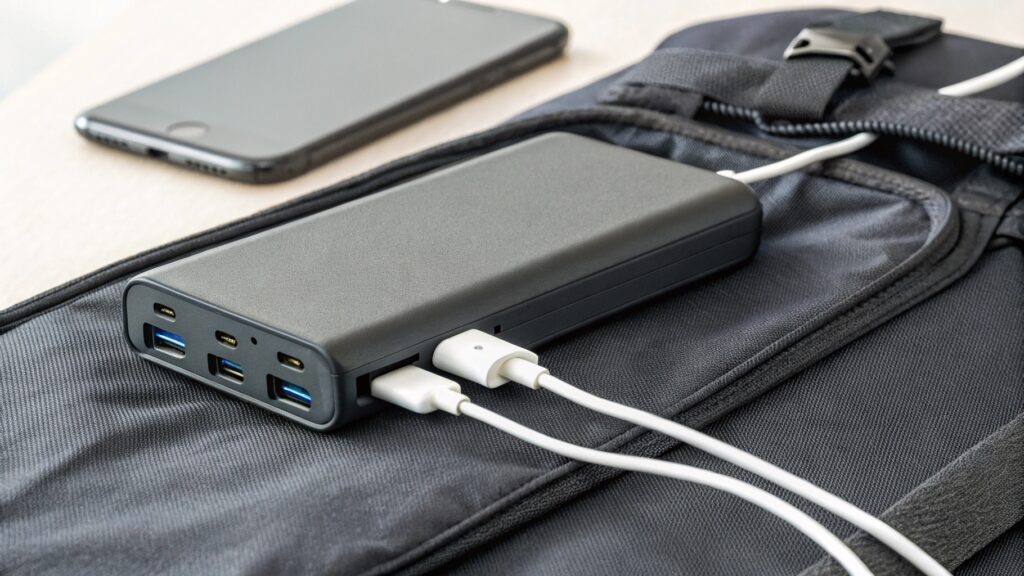
I remember when I first realized the true value of a power bank. It was not just about having extra battery life. It was about having the freedom to stay connected, no matter where I was. This is why I believe a power bank is so much more than just a piece of tech. It is a lifeline in our busy, digital lives.
What is the Purpose of a Power Bank Charger?
Do you ever wonder why power banks are so essential these days? Many people see them as just a backup battery, but they serve a much bigger role in our modern lives.
The main purpose of a power bank charger1 is to provide portable, on-demand power for electronic devices, ensuring uninterrupted connectivity and productivity in any situation where a wall outlet is unavailable.
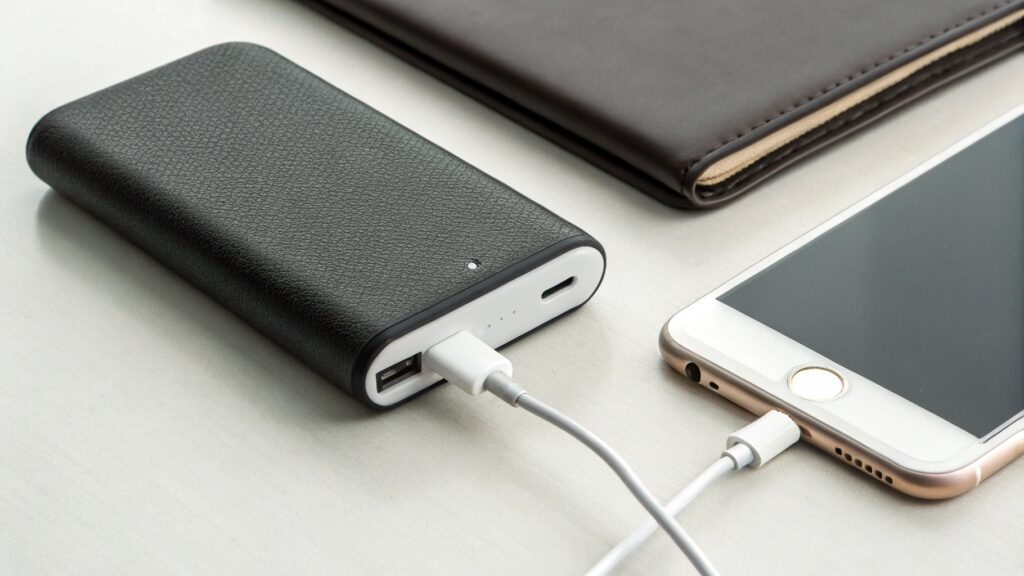
When I think about power banks, I think about the many times they have saved me or my clients. It is not just about charging a phone. It is about keeping a business call going, navigating a new city, or simply staying in touch with loved ones. I always tell my team that power banks are more than just a product. They are a solution to a modern problem. They give people the power to live their lives without worrying about their devices dying.
Why do we need power banks?
We need power banks because our lives are now centered around mobile devices. These devices need power, and we are not always near a wall plug.
| Need | How a Power Bank Helps | Real-World Impact |
|---|---|---|
| Mobile Dependency | Keeps smartphones, tablets, and other gadgets running. | Ensures communication, work, and entertainment continue. |
| Travel and Commuting | Provides power when outlets are scarce. | Lets you use navigation, listen to music, or work on the go. |
| Emergency Preparedness | Offers a reliable power source during outages. | Essential for staying informed and contacting help. |
| Outdoor Activities | Powers devices far from any electrical grid. | Keeps GPS, cameras, and music players alive during adventures. |
| Work Productivity | Ensures laptops and work devices stay charged. | Allows for continuous work outside of an office setting. |
I have seen how much people rely on their devices. A power bank makes sure that reliance does not turn into frustration. It is like having a portable power station in your pocket. This means you can do more, go further, and never feel cut off.
How Do I Connect My Power Bank to My Phone?
Are you unsure how to get your power bank to charge your phone? It can seem a bit confusing with all the different cables and ports.
To connect your power bank to your phone, you simply need the correct charging cable2 for your phone. Plug one end into the power bank's output port and the other end into your phone's charging port. Then, press the power button on the power bank if it has one.
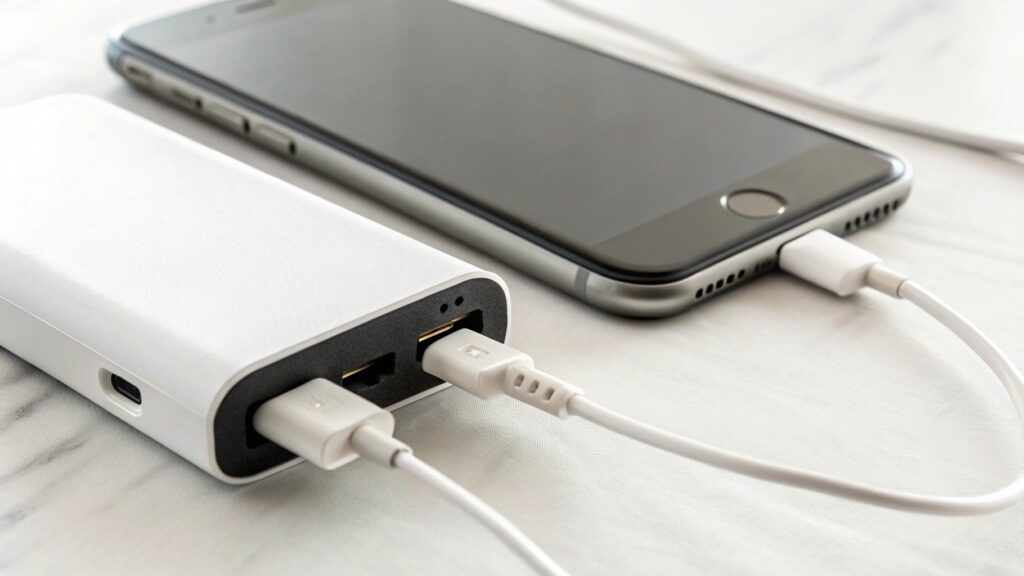
When I explain this to clients, I always make it as simple as possible. It is like plugging your phone into a wall charger, but instead of the wall, you plug it into a portable battery. I remind them to always check the cables. Sometimes, the cable you use to charge your phone might be different from the cable needed for the power bank itself. It is a common mistake, but it is easy to fix.
What kind of cables and ports do I need?
You need to know the type of charging port your phone has and the types of output ports on your power bank. This ensures they can connect.
| Port Type | Common Use Cases | What It Looks Like |
|---|---|---|
| USB-A (Output) | Most common output port on power banks. | Rectangular, found on one end of most charging cables. |
| USB-C (Input/Output) | Modern standard for both charging the power bank and devices; reversible. | Oval-shaped, can be plugged in either way. |
| Micro-USB (Input) | Older standard for charging the power bank itself, some older Android phones. | Small, trapezoidal shape. |
| Lightning (Output) | Specific to Apple iPhones and iPads (requires a Lightning to USB-A/C cable). | Slim, reversible, typically white. |
| Integrated Cable | Some power banks have a built-in cable, simplifying use. | A cable permanently attached to the power bank. |
I always advise people to double-check their phone's port type before buying a power bank. This makes sure they can connect easily. Having the right cable is key to a smooth charging experience.
How to Choose a Power Bank for Your Phone?
Are you feeling lost trying to pick the right power bank? With so many options, it is hard to know what really matters when buying one.
To choose a power bank3 for your phone, consider its capacity (mAh), output speed (Amps/Watts), the types of ports it offers (USB-A, USB-C), its portability, and essential safety features to ensure it meets your needs and is safe to use.
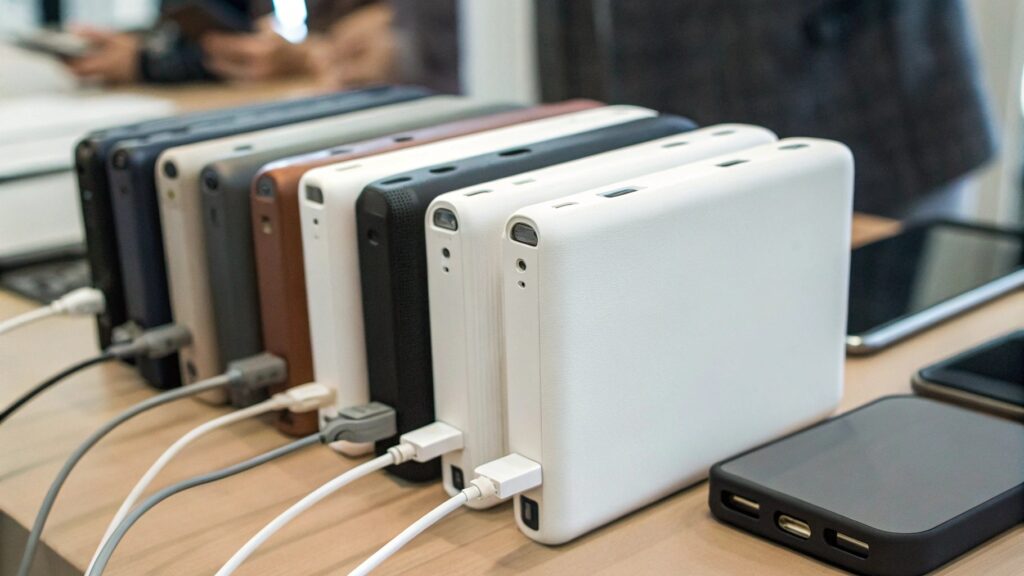
I have helped countless businesses pick the right corporate gifts, and power banks are a popular choice. The process of choosing one for yourself is very similar. You need to think about your needs. Are you a heavy user? Do you travel a lot? Do you need to charge multiple devices? Asking these questions helps narrow down the choices. I tell people to not just look at the price. A cheaper power bank might not be safe or last very long.
What should I look for when buying a power bank?
When buying a power bank, focus on these key features to ensure you get a product that is reliable and fits your needs.
| Feature | Why It Matters | What to Look For |
|---|---|---|
| Capacity (mAh) | Determines how many times it can charge your device. Higher mAh means more charges. | For smartphones, 5,000mAh to 10,000mAh is good for 1-2 charges; 20,000mAh+ for multiple charges or tablets. |
| Output Speed (A/W) | Affects how quickly your device charges. Higher numbers mean faster charging. | Look for 2A (Amps) for standard charging, or fast-charging technologies like Power Delivery (PD) or Quick Charge (QC) for 18W or higher. |
| Portability | How easy it is to carry. | Small and lightweight for daily carry (e.g., 5,000mAh); larger, heavier ones for extended trips. |
| Safety Features | Protects your devices and the power bank from damage. | Overcharge protection, short-circuit protection, over-current protection. Look for reputable brands. |
| Build Quality | Determines how long the power bank will last. | Durable materials, solid construction. Read reviews for reliability. |
| Input Speed | How quickly the power bank itself recharges. | Look for fast input charging (e.g., USB-C PD) to save time. |
I always stress the importance of checking reviews and buying from trusted brands. This helps avoid common issues. A good power bank is an investment in your peace of mind and connectivity.
Conclusion
A power bank is a portable battery that gives your devices power on the go. It works by storing energy and then releasing it through cables. Choose one based on how much power you need and what kind of ports you use.
-
Understanding the purpose of a power bank charger can help you appreciate its importance in modern life and how it enhances connectivity. ↩
-
Knowing the right charging cable for your power bank can prevent frustration and ensure a smooth charging experience for your devices. ↩
-
Choosing the right power bank is crucial for ensuring your devices stay charged and functional, especially during travel or emergencies. ↩


